
UNAIDS Executive Director, centre, on stage at the closing of the Youth Pre-Conference.
Credit: UNAIDS/Heimo Aga
UNAIDS Executive Director Mr Michel Sidibé has highlighted how young people are leading the prevention revolution.
Mr Sidibé was speaking at the reception of the closing ceremony of the Youth Pre-Conference which took place 16 July 2010.
Referring to the data that shows that HIV prevalence has dropped 25% among youth in 15 of the highest burden countries, Mr Sidibé noted “young people are leading the prevention revolution… my dear young friends, never forget that your generation is different—and you are making the difference!”
He called for better access to comprehensive information on sex and sexuality and sexual and reproductive health services; more investment in young people within national development goals to ensure an HIV-free generation and better data disaggregated by age and gender so responses can be tailored.
Mr Sidibé also highlighted the importance of human rights and gender equity saying no one should be ashamed or stigmatised by who they are or who they love.
The three day event for young people attending AIDS 2010 consisted of information sessions and skills-building workshops on HIV issues ranging from scientific knowledge to effective political advocacy. The event which began on 14 July and covered a range of workshops for young delegates to get the most out of the forthcoming XVIII International AIDS conference which begins on 18 July. Delegates had a chance to familiarize themselves with logistics, hone their advocacy and networking skills and attend “share your knowledge” sessions with peers.
Young people are high on the agenda at the forthcoming AIDS 2010.
Call for framework of human rights, harm reduction and health resources
Following a worldwide electronic consultation conducted by the Vienna YouthForce Advocacy Sub-committee, young people will run a campaign at AIDS 2010 to promote human rights, harm reduction and health resources as a framework to achieve HIV services for young people—Now make it happen!.
By highlighting these “3 HRs” to policy experts and decision makers in the coming week they hope to highlight young people’s needs in the AIDS response.
Recent analysis shows that when young people are empowered, they are taking responsibility for their behaviour and making a difference in the AIDS response.
Trends in HIV prevention and young people
Young people have shown that they can be change agents in the prevention revolution. According to UNAIDS Outlook Report published 13 July 2010, HIV prevalence has decreased among young people in more than 16 of the 21 countries most severely affected by the epidemic.
Of these, 12 have seen HIV prevalence among young people drop by more than 25%. Countries include Kenya, Ethiopia, Malawi, Namibia, Zimbabwe, Botswana, and Côte d’Ivoire. Young people are leading the revolution by adopting safer behaviours—they are choosing to have sex later, have fewer partners and are using condoms.
UNAIDS has made empowering young people to protect themselves from HIV a priority area. It calls on countries to implement a comprehensive set of programmes that put young people’s leadership at the centre of national responses, and empower young people to prevent sexual and other transmission of HIV infection among their peers.
Youth Pre-Conference
The Youth Pre-Conference was jointly organized by the AIDS 2010 Youth Programme and Vienna YouthForce (VYF), a global platform of international, regional and local youth organizations that focus on HIV as well as on sexual and reproductive health and rights.
The event received support from the UN Population Fund (UNFPA). UNFPA is the UNAIDS Cosponsor which leads on youth and HIV issues. It is committed to promoting meaningful youth participation in international events and has provided considerable support to young people during the previous three international AIDS conferences in Bangkok 2002, Toronto 2006 and Mexico 2008.
The eighteenth International AIDS Conference will begin on Sunday in Vienna. These events, which take place every two years, are the biggest gatherings of scientific, community and government leaders, UN agencies, donors and the general public committed to finding solutions to end the spread of HIV and provide access to services.




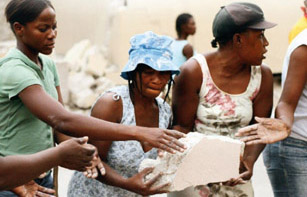
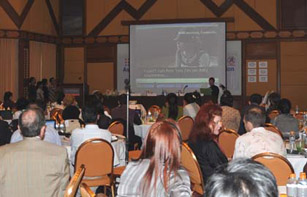
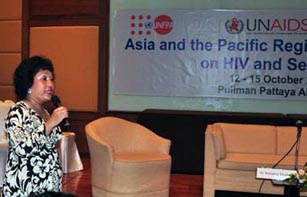
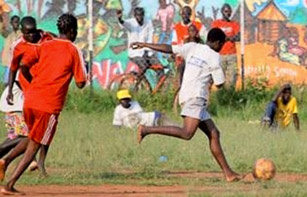

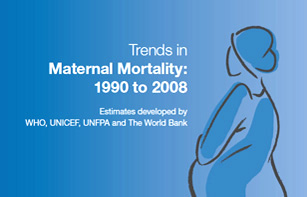



 Y-PEER phone app launched at AIDS2010, 23 July 2010. Credit: UNAIDS/Heimo Aga
Y-PEER phone app launched at AIDS2010, 23 July 2010. Credit: UNAIDS/Heimo Aga Right for you! satellite. Credit: UNAIDS/Anna Rauchenberger
Right for you! satellite. Credit: UNAIDS/Anna Rauchenberger UNAIDS Executive Director, centre, on stage at the closing of the Youth Pre-Conference.
UNAIDS Executive Director, centre, on stage at the closing of the Youth Pre-Conference.  The research was supported by a telephone helpline service to respond to health and human rights concerns of sex workers during the World Cup.
The research was supported by a telephone helpline service to respond to health and human rights concerns of sex workers during the World Cup. 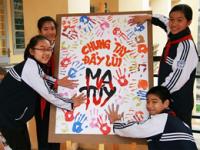 “This is a unique experience with the UN I’ve never seen elsewhere,” said Lisa Sherburne, an HIV specialist with Save the Children. Credit: UN
“This is a unique experience with the UN I’ve never seen elsewhere,” said Lisa Sherburne, an HIV specialist with Save the Children. Credit: UN